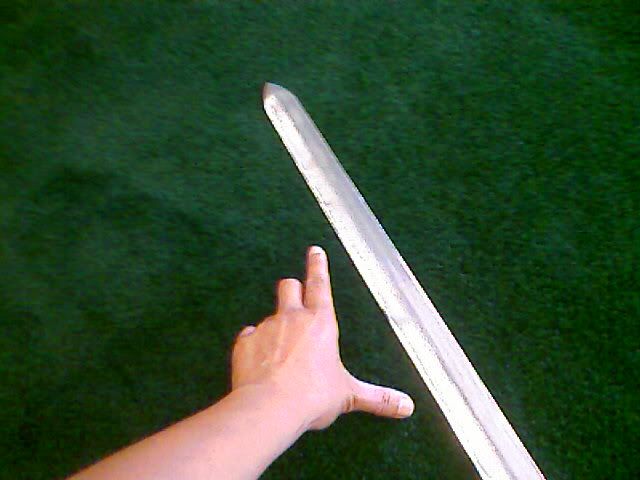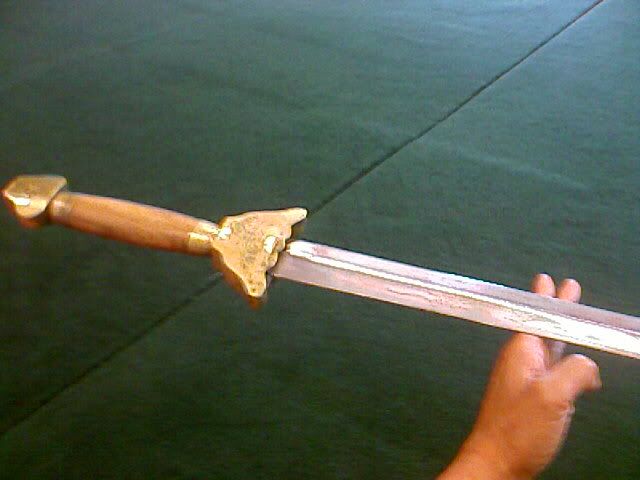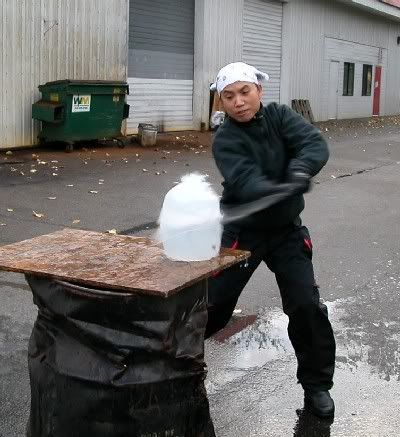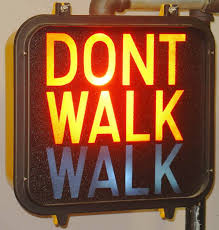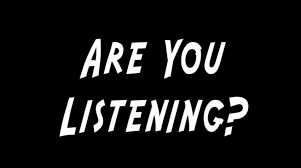I have a class, called "Tiny Tigers", that is an activity that prepares them for the "Mighty Mites" class (5 to 7 years old). I've modified the curriculum so that the children are exposed to martial arts themed activities that introduce the following aspects of martial arts training:
- Taking turns, waiting for their turn at an activity
- Following simple instructions
- Raising a hand to ask a question, no interrupting
- Learning responsibility for their actions
-Empathy
-Self confidence
-Encouraging others
And.....its fun!
Notice that although martial arts techniques are indeed taught in the class, they are secondary to the above list. The class does not teach complete forms,....instead, I introduce movement combinations taken from our forms , and play a "follow the leader" and "what comes next?" type of game. The kids love it, and I venture to say that most times, the kids don't really realize they're learning martial arts. Its difficult for 3 year olds to remember 12 to 20 movment sets.....combinations work just fine for learning "sequencing".
Some teachers might say that "dumbing down" a martial art for very young children is not really teaching "martial art", but I beg to differ. After all, isn't it the job of any teacher to break down concepts of their curriculum into its basic elements, so that the student can better understand the concept? Not just memorize the concept or operation, but to really understand it?
We as martial arts teachers have a responsibility to not think of them as "little adults". Very young children are growing both physically and mentally. To put very young children through a very intense workout that is similar to an adults class and that is beyond a child's natural physical ability to "play", can be damaging to their growing bodies. Not to mention, an overly strict disciplinarian atmosphere that Adults would have to problem with, will turn off a child. There has to be a firm hand in the disciplinarian factor of martial arts for kids, (i.e. "you kicked Jimmy for no reason while I was talking. This is not allowed. Its time for a sit-out"), but to punish a child for not getting a technique correct is overkill. If a class for young kids is conducted like an adults class, many times a 3 year old will not understand why they're doing pushups for talking out, or why they have to do a timeout or a sit-out for trying his newly learned roundhouse kick at little Jimmy.
Another responsibility we have is to encourage less able children as much as a "gifted child". I once witnessed a coach pay more attention to a child that could do aerial cartwheel after only 2 weeks, and pretty much ignore another child that was working so hard at a regular cartwheel on his hands. I could see that the second child was trying to gain the approval of the coach, but the child was dismissed with a "Yes, great effort, but your goal is to get it down like Tommy".
One thing I always try to do all during a class, is make the expectations for the class known. At the beginning of a class, I might say "Okay, My expectations for today are: Try your best, Keep your hands to yourself unless I say its okay to work together, and no talking while Sifu is talking". Each class has a different set of 3 expectations.....I try not to list all my expectations at one class....they won't remember them. I then give 3 choices for the "timeout" activity (if someone breaks one of the 3 rules. After I give my 3 expectations and the children choose the timeout activity, I remind them throughout the whole class about the expectations. Most times, when a child does break a rule, they know exactly what the timeout factor is.....after all, they chose it!
One word of advice to teachers that choose to teach very young children. Speak to the parents beforehand to let them know that "side coaching" is not allowed. Explain that it will confuse the child if the parent is shouting "No!, use your other hand!" or "Timmy, listen to Sifu or you're going home!" The children need to learn to follow instructions from another authority figure, and to learn that the martial arts studio is a special place and martial arts classes are a privelege. Respect for the teacher is something we want the child to learn on his own, not just because the parent tells him/her to. If a parent shouts or attempts to coach the child during class, it tends to make the child think that the parent knows martial arts too, and is a martial arts teacher as well.....which sometimes, can lead the child to view the teacher as "bossy" just like the parent.
A word of advice to the parents of young children in martial arts: Now, as parents, we all want our children to do well in activities. But while we're on the subject, please leave the teaching to the teachers. For many children, this activity is something of "their own", and it gives them pride and self confidence to be able to do something on their own. Although I do try to teach the difference between "right leg" and "left leg", I'm not going to take it personally if they kick with a left leg when I ask for a right leg kick.....so why should the parent? Parents, keep in mind, that your child's progress (or lack thereof) is not necessarily a reflection on you.....instead it just shows me their learning curve so that I can better teach them and improve my curriculum.
Funny story....a few weeks ago, there was a new 4 year old child trying out one of my classes. I asked him why he wanted to do kung fu. "I already know kung fu", he said proudly.
"Oh?? How so? Who is your Sifu?" I asked.
"My Mastersifu is Po".
"Oh....Kung Fu Panda. Did you notice that Po had to work very hard to get good at Kung Fu?"
"Oh I'm as good as Po. I've practiced for a very long time. Are you a mastersifu?"
"Um....yes....I'm a mastersifu." (I didn't have the heart to tell him that the term mastersifu was incorrect. Although I do see why the movie introduced the term as such).
The hard part for me was, to teach him for that introductory lesson without him feeling "less than" for not knowing what a horse stance was or what an instep kick was. He had such an expectation that my class would be like "Kung Fu Panda", that he would sit himself out when we saw we didn't say "Skadoosh" or have a "secret pinky technique". One of my kids asked him "Hey, why don't you do instep kick with us? Its like this", and proceeded to demonstrate. "Oh, I already know how to do that. Its easy."....he then walked up to my kicking shield. "Wait wait.....you gotta wait your turn. Its Alex's turn right now". But he proceeded to kick at my shield with his toes. Ouch. That hurt. I could tell he kicked with his toes. He sat back down. "What's the matter?" I asked. "You did okay! Did you kick with your top of foot or your toes?" "My top of foot!" He rolled his eyes. Did a 4 year old just roll his eyes at me?
"Well good. You can continue to practice it if you'd like".
"Nah. I know it. And I'm tired anyway".
Definitely, this child NEEDS a type of regular activity and self discipline that martial arts training can bring.
Funnier thing is....sometimes I meet Grownups that are exactly like that.





